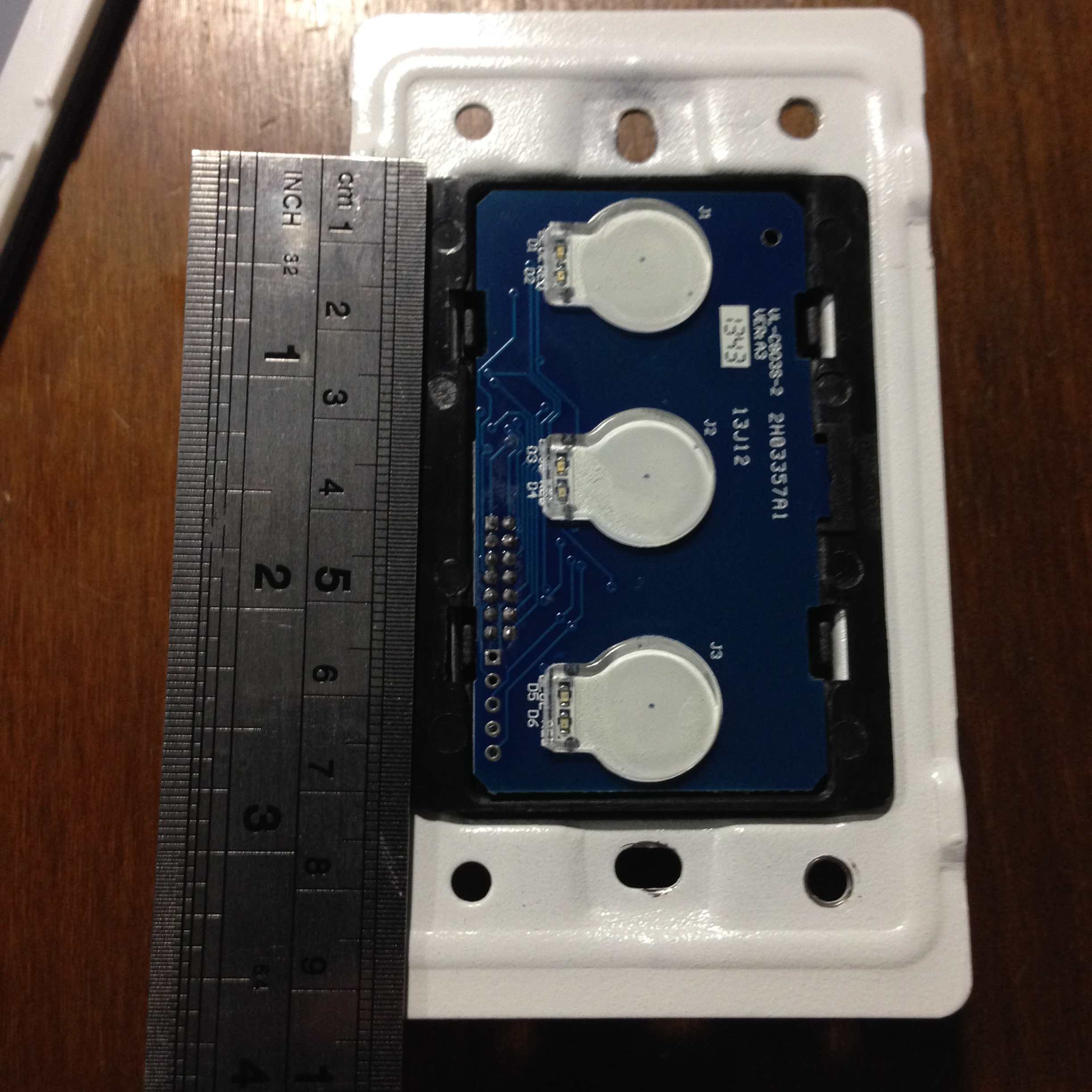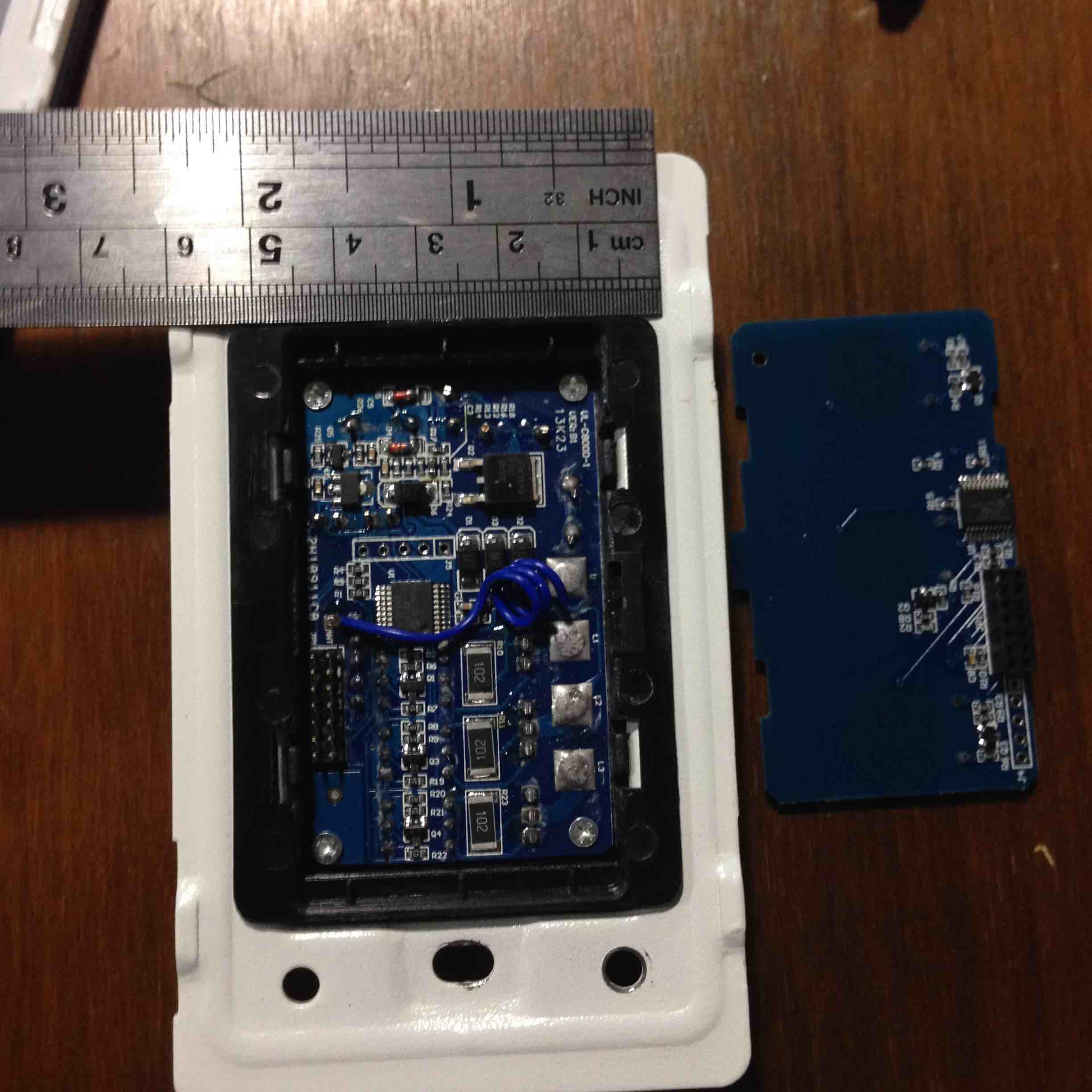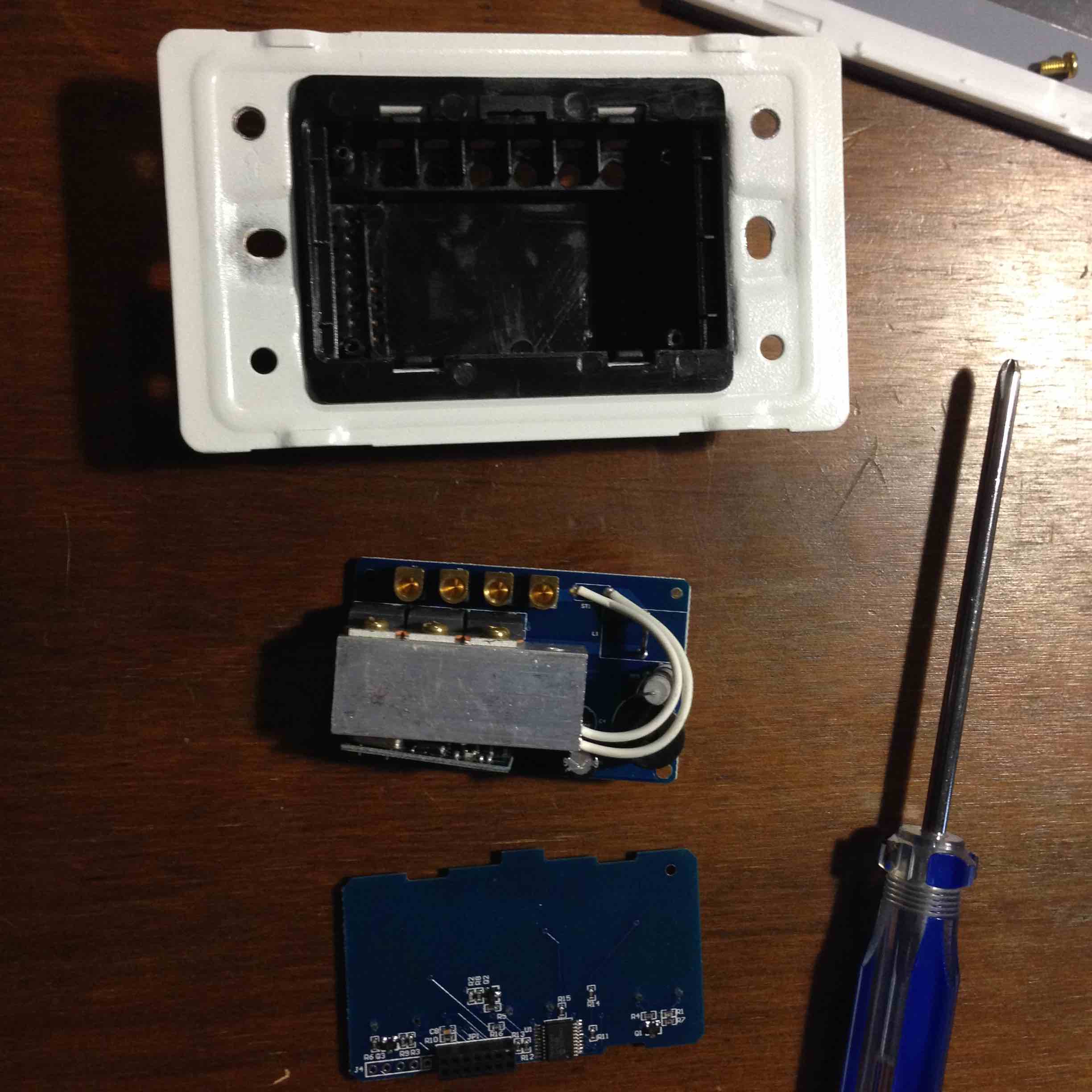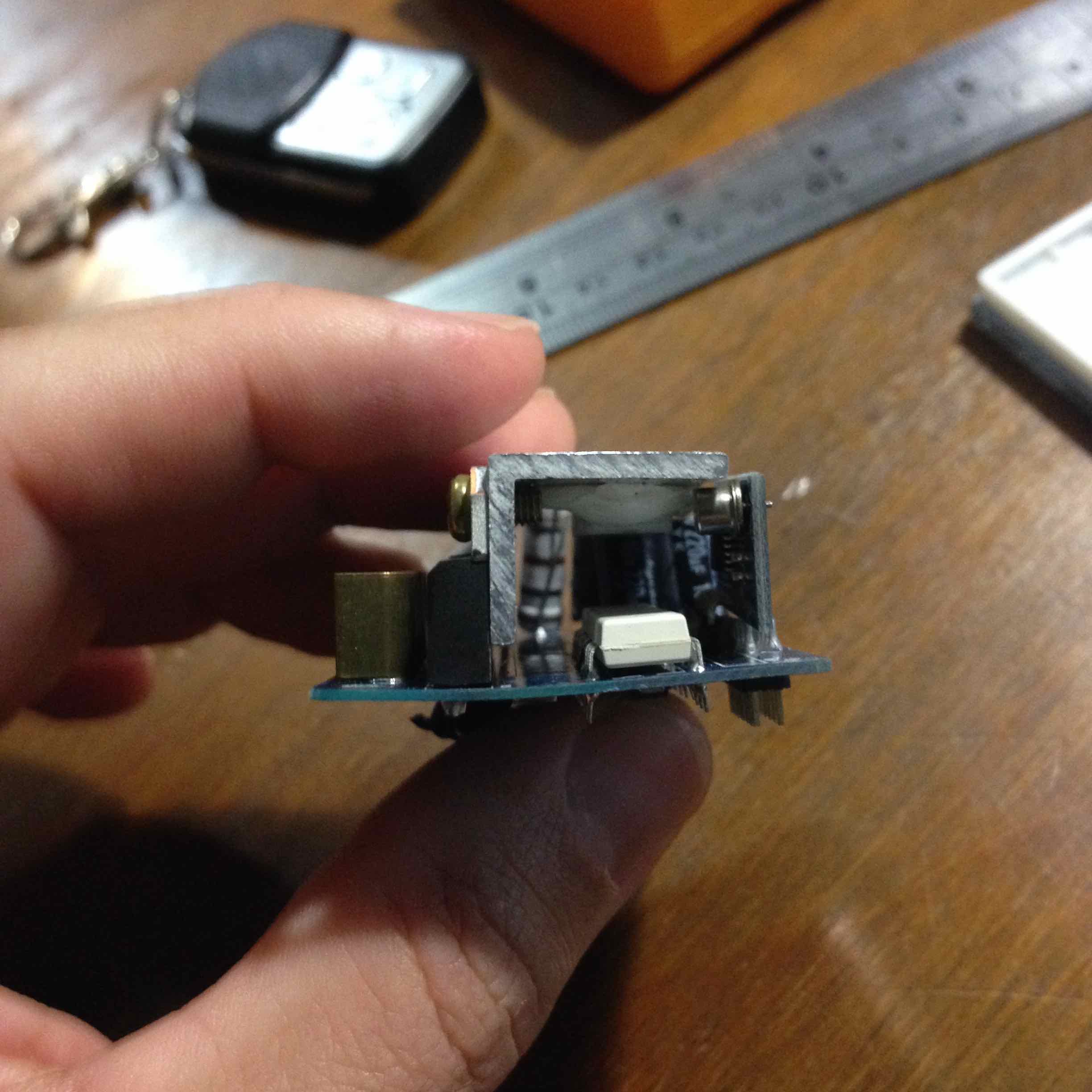livolo Glass Panel Touch Light Wall Switch + arduino 433Mhz
-
Hi all,
someone has already use livolo Glass Panel Touch Light Wall Switch (or livolo like) ?
I found a arduino library to work with it, but I'm not sure switch below is a 433Mhz compatible: -
Hi @hek
In ebay pictures you can see 433Mhz receiver...
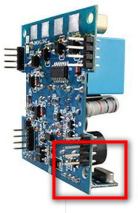
is it the same no ?

-
yes,
I'm going to ask ;) -
Hi,
Kind late, but if you still interest I just got my livolo switchs working with mysensors. The 433mhz transmiter has a short range without a antenna and trying to control the living room lights from the adjacent bedroom fails about half the time. But the real downside is that the switch doesnt transmit/report its state, so you cant really know if the lights is on or off. If you are mostly interested in remote control that's ok because you just keeping pressing the button until the light is on/off, but if you are interested in some kind of automation (like, turn the lights on at 6pm) knowing the state is important. Thats sad because the switches really looks good and the touch is good.
-
Hi,
Kind late, but if you still interest I just got my livolo switchs working with mysensors. The 433mhz transmiter has a short range without a antenna and trying to control the living room lights from the adjacent bedroom fails about half the time. But the real downside is that the switch doesnt transmit/report its state, so you cant really know if the lights is on or off. If you are mostly interested in remote control that's ok because you just keeping pressing the button until the light is on/off, but if you are interested in some kind of automation (like, turn the lights on at 6pm) knowing the state is important. Thats sad because the switches really looks good and the touch is good.
@chrlyra how much space is inside the switch? could there be enough room for an arduino+ nrf24 instead of the 433mhz transmitter?
would be great if you could post some photos of the backside (because thats where the electronics are i think?)
-
@HenryWhite, sure. I had a couple of switches arriving next week and will take some photos before installing them.
-
Great, I am interested too! They definitly look great ;) Although I am unsure about using "china" hardware with mains in my apartment (ensurance issues?)
-
I found these a while back, and was very tempted to go the route of modding these to work with mysensors with a nRF24L01 inside rather than the poor 433mhz transceiver.
However, for a few reasons i went the route of creating my own wireless light switch that can be used with any rocker/momentary switch front. Project can be found here.
I'm currently in the process of finding some sleek way of making a capacitive touch front plate for this module to make it look somewhat like these Livolo glass switches. It may come to purchasing these just for the face-plate and then removing the rest of the product.
-
I found these a while back, and was very tempted to go the route of modding these to work with mysensors with a nRF24L01 inside rather than the poor 433mhz transceiver.
However, for a few reasons i went the route of creating my own wireless light switch that can be used with any rocker/momentary switch front. Project can be found here.
I'm currently in the process of finding some sleek way of making a capacitive touch front plate for this module to make it look somewhat like these Livolo glass switches. It may come to purchasing these just for the face-plate and then removing the rest of the product.
@Samuel235 nice! Since I barely know how to solder I ended going for the livolo. But I may ask for friends help if we find a way to mod the livolo. Btw, since you will change the internals you may look for the ones without RF as they would be even cheaper.
-
Thank you for providing images @chrlyra, it looks poorly made at the least, only from looking at these images though. You're correct in saying i could purchase these without the internal radios if i just specifically want the face-plate. Its a shame they're so cheaply manufactured, they have some real potential, not for me now i know how dodgy these look on the internals.
They also look like they do all the switching through mosfets rather than relays, which is fine if controlled correctly. The mosfet on the first image looks something along the lines of a Power MOSFET in a DPAK package, N-Channel or P-Channel.
I'm very intrigued at those touch sensors, very nifty looking items. If someone know how to find those on the internet please inform me, i'm very interested in those. The only way i'm thinking of remaking something like those would be to create a capacitive touch sensor behind a blank wall plate, one of these. They don't look very stylish though, i need to come up with some other product for my project.
-
I think if you want to reuse the livolo that won't be easy. I have one livolo, without radio and no dimmer. So it uses relay. I know about the mosfet version. I think mosfet is nice too.
I have already unpacked it and checked some electricals connection because I was thinking to hack it. But I think this is too much pain for maybe not great results.
On mine, the brain mcu is on the capacitive plate (a microchip mcu). I have not tried to access/change fw of the mcu though but I thought, well, I could do another plate and reuse relay board, easy!..but then there is the radio. Reuse the livolo one? some work, not the best perf, no state back.. Use my rfm69 radio (I prefer 868 than 433) ? I'm not sure the livolo can provide power I need etc... so it could put me on a tricky road for not great results, looking not good inside the box..
Too bad! Because my livolo is well built and I like the glass plate. I want the glass plate!! It's cheap and you have the whole enclosure.
So finally, I have a project in progress where I do everything from scratch, with glass plate and gesture, yep ;) but I don't know yet when it will be finished as I have a few other things to finish. -
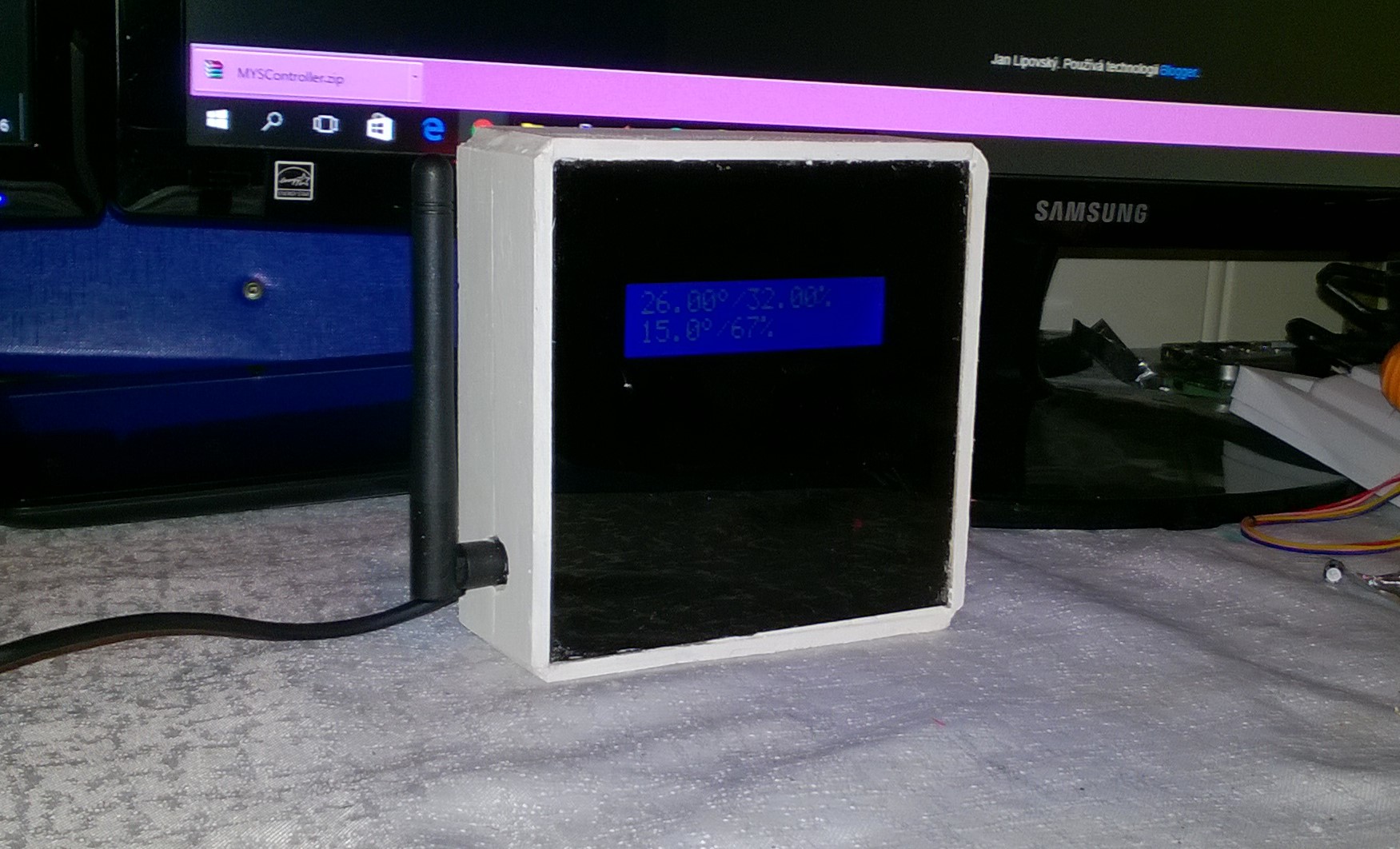
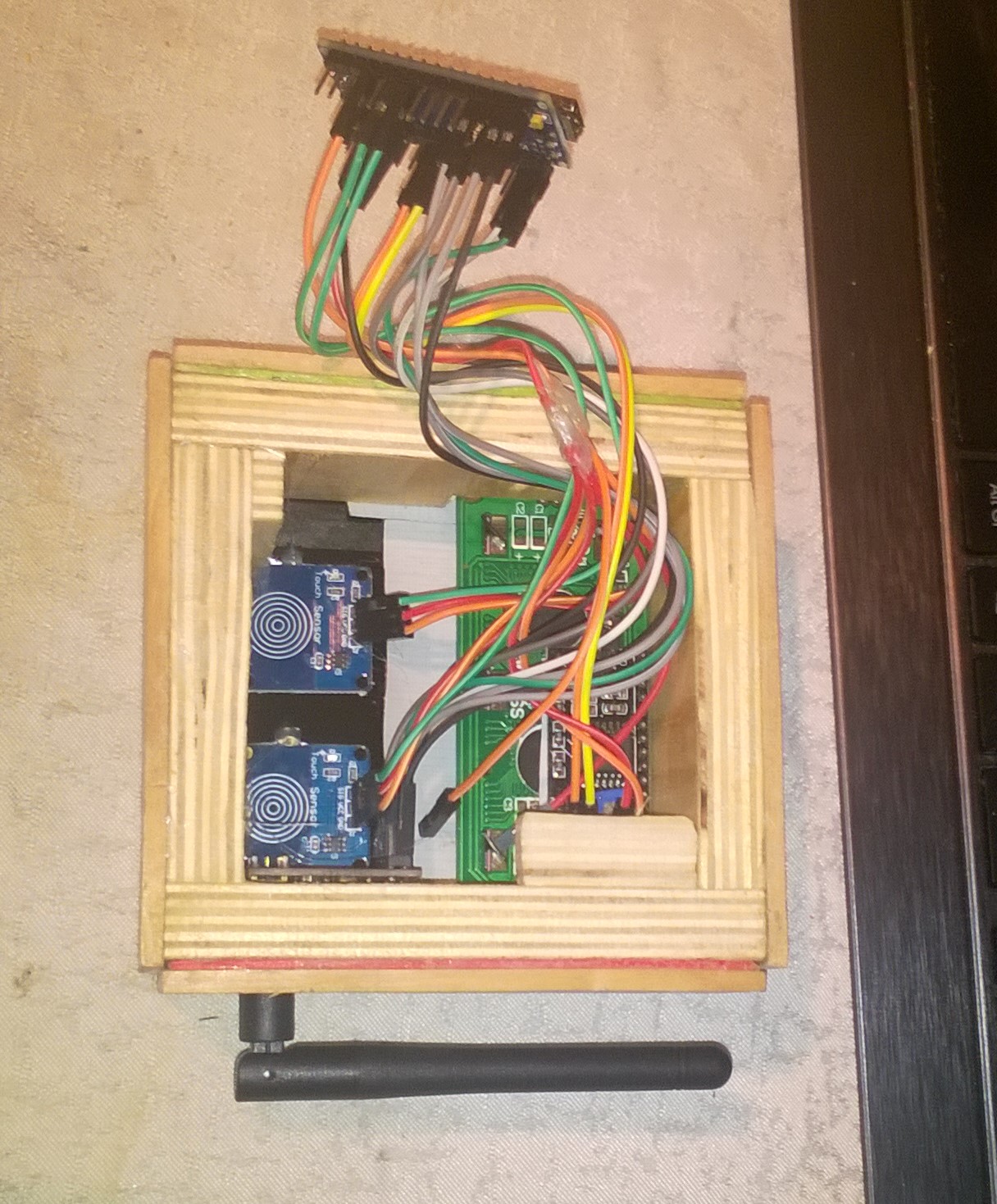
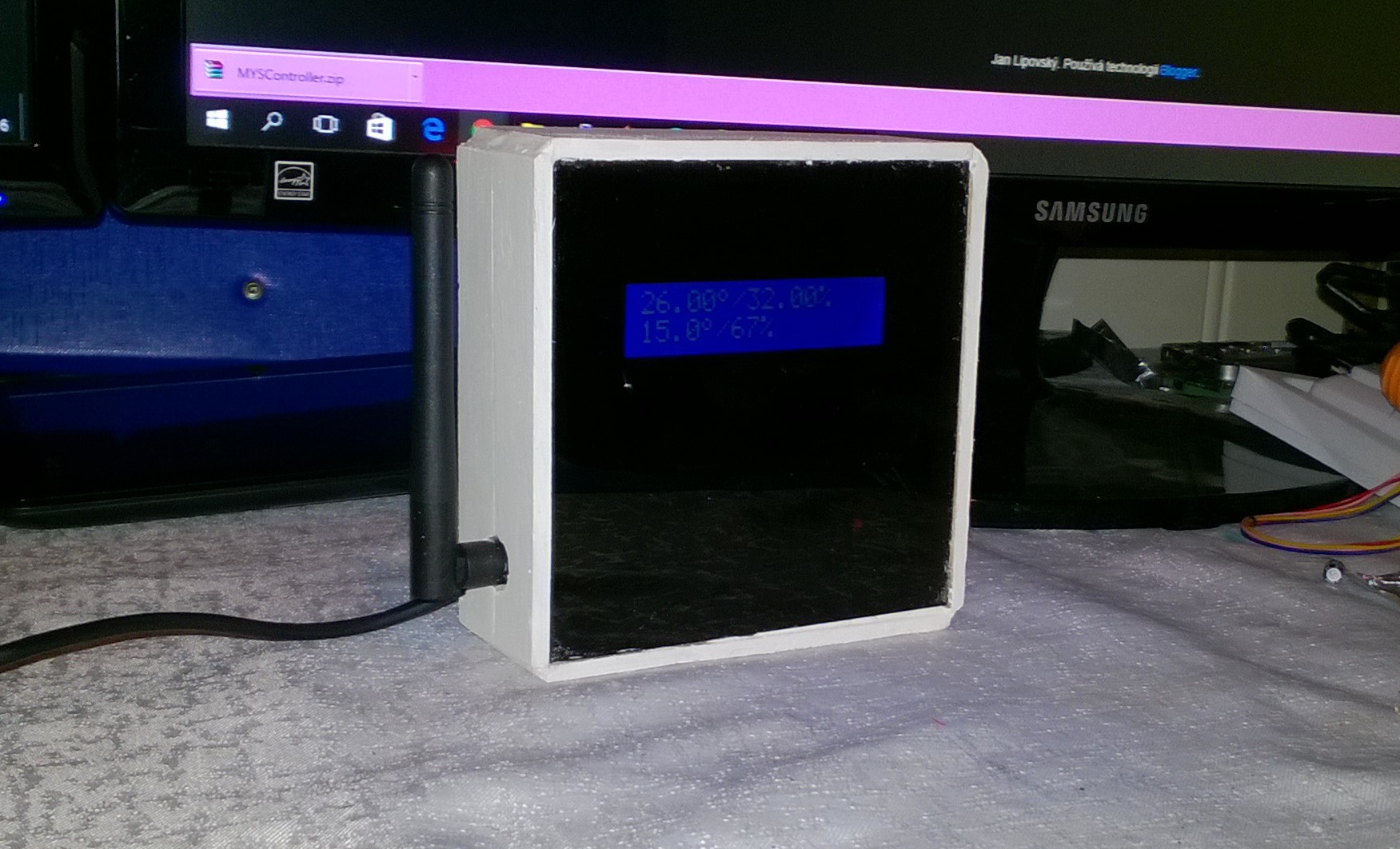
Im just about to finish this one, i use a black (transparrent) acrylic plate with touchmodules and LCD behind the acrylic.
-
Hello, I just found out that Livolo is selling the glass plates (EU standard only, too bad for me :( ) alone on it's aliexpress shop. 3.72€ for square plate (1 or 2 switches), 6.24€ for double sized plate (up to 4 switches) and 8.77€ for triple size (up to 6 switches !).
I have US(AU) sized switches here so I'm a bit screwed up, but I think I will try to order a double plate and put on top of one of my switches boxes which are a bit smaller.
Check the "EU DIY Parts" category in the Livolo shop. -
@Nca78 that's what I'm planning to do ;) you can't find cheaper for already cutted glass plate imho. I'm redesigning the box for 3d printing, and maybe sand and repeint the plate, I'm note sure yet as I don't really care about the button layout (I will use gesture).
-
Hello, I just found out that Livolo is selling the glass plates (EU standard only, too bad for me :( ) alone on it's aliexpress shop. 3.72€ for square plate (1 or 2 switches), 6.24€ for double sized plate (up to 4 switches) and 8.77€ for triple size (up to 6 switches !).
I have US(AU) sized switches here so I'm a bit screwed up, but I think I will try to order a double plate and put on top of one of my switches boxes which are a bit smaller.
Check the "EU DIY Parts" category in the Livolo shop.

